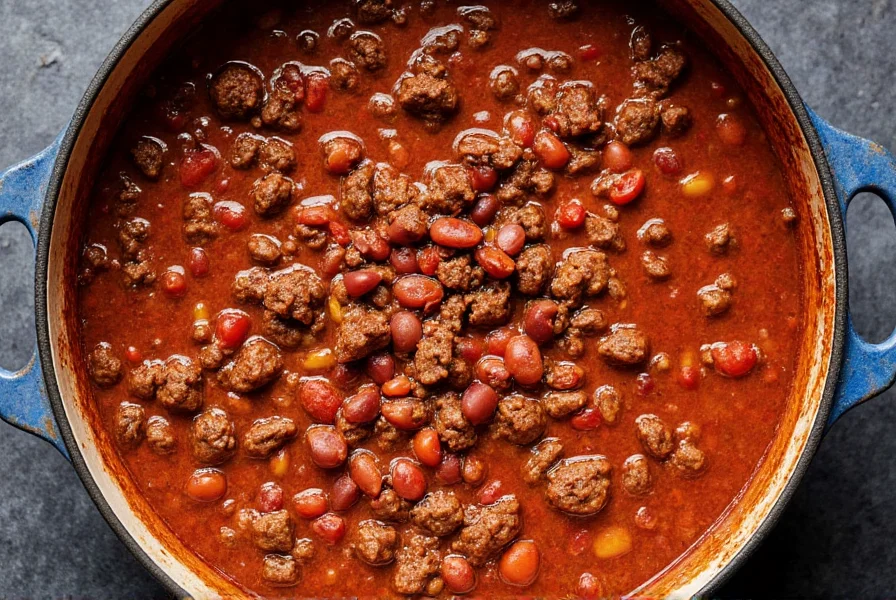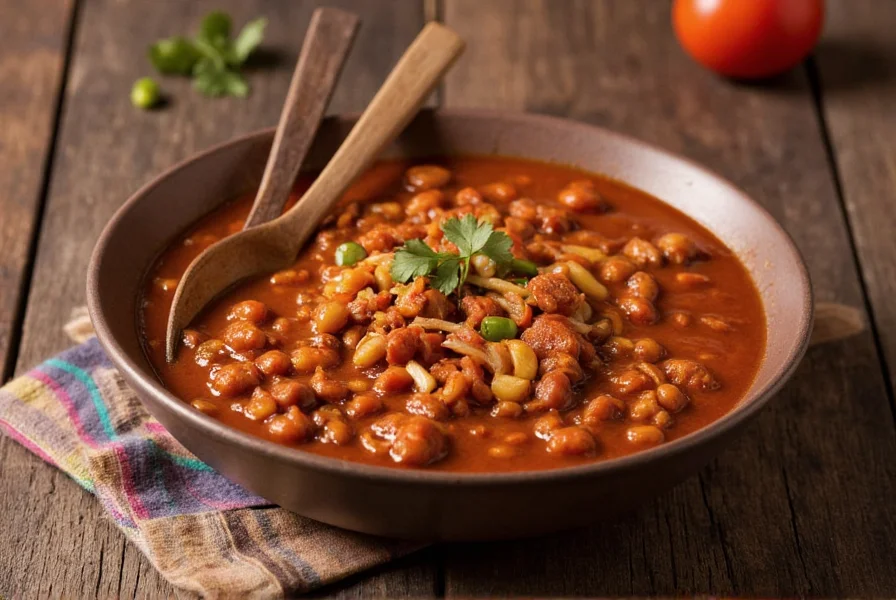When exploring regional American chili styles, flatlander chili represents a beloved Midwest tradition that balances hearty ingredients with approachable flavors. Unlike the bean-free Texas red or the unique spicing of Cincinnati chili, flatlander chili embraces beans as a core component while maintaining a robust meat foundation. This culinary approach reflects the agricultural abundance of the Great Plains region where dried beans were historically a practical pantry staple.
Understanding Flatlander Chili's Regional Roots
The term "flatlander" traditionally refers to residents of non-mountainous regions, particularly those living on the Great Plains. In chili culture, this designation identifies a style developed by settlers and farmers across states like Kansas, Nebraska, and Iowa. These communities adapted Southwestern chili recipes to incorporate locally available ingredients, resulting in a distinctive variation that differs significantly from its regional counterparts.
Historical food records show that flatlander chili emerged during the late 19th century as homesteaders settled the plains. With limited access to specialty ingredients but abundant beef from local ranches and beans from their gardens, settlers created this practical adaptation. The inclusion of beans provided both nutritional value and helped stretch meat supplies during leaner months—a characteristic that remains central to authentic flatlander chili preparation today.
Key Characteristics of Authentic Flatlander Chili
What truly distinguishes flatlander chili from other regional styles? Three essential elements define this Midwest specialty:
| Chili Style | Beans Included | Tomato Content | Heat Level | Signature Ingredients |
|---|---|---|---|---|
| Flatlander | Yes (kidney or pinto) | High (crushed tomatoes) | Moderate | Ground beef, cumin, oregano |
| Texas Red | No | None | Variable | Chuck roast, chili powder |
| Cincinnati | No | Medium | Mild | Spaghetti, chocolate, cinnamon |
Unlike Texas chili which proudly declares "no beans" as a point of pride, flatlander chili embraces beans as an essential component. The tomato content is notably higher than in Southwestern styles, creating a saucier consistency that makes it particularly suitable for serving over cornbread or rice. The heat profile typically falls in the moderate range—spicy enough to satisfy chili enthusiasts but accessible to those preferring milder flavors.
Traditional Flatlander Chili Recipe
Creating authentic flatlander chili requires attention to both ingredient selection and cooking technique. This traditional recipe serves 6-8 people and requires approximately 2 hours from start to finish, including simmering time.

Essential Ingredients
- 2 lbs ground beef (80% lean)
- 2 (15oz) cans kidney beans, drained
- 2 (28oz) cans crushed tomatoes
- 1 large yellow onion, diced
- 4 cloves garlic, minced
- 3 tbsp chili powder
- 1 tbsp ground cumin
- 2 tsp dried oregano
- 1 tsp smoked paprika
- 1 cup beef broth
- Salt and black pepper to taste
Step-by-Step Preparation
- Brown the ground beef in a large Dutch oven over medium-high heat, breaking into small crumbles
- Add diced onions and cook until translucent (about 5 minutes)
- Stir in garlic and dry spices, cooking for 1 minute until fragrant
- Add crushed tomatoes, kidney beans, and beef broth
- Bring to a gentle boil, then reduce heat to low
- Cover and simmer for 90 minutes, stirring occasionally
- Adjust seasoning with salt and pepper before serving
The extended simmering time proves crucial for developing flatlander chili's characteristic flavor profile. This slow cooking process allows the ground beef to fully integrate with the tomato base while the spices mellow into a harmonious blend. Unlike quicker chili preparations, authentic flatlander chili benefits from the melding of flavors that only time can provide.
Perfecting Your Flatlander Chili Technique
Several professional techniques can elevate your flatlander chili from good to exceptional. First, consider the "bloom" technique for your spices—cooking the chili powder, cumin, and oregano in the fat from the browned beef for 60-90 seconds before adding liquids. This process activates the essential oils in the spices, creating deeper, more complex flavors.
Second, many experienced chili makers recommend a "resting" period. After the initial cooking, allow your chili to cool completely, then refrigerate overnight before reheating. This additional time lets the flavors continue to develop and integrate, often resulting in noticeably improved taste the following day.
For those seeking to customize their flatlander chili while maintaining authenticity, consider these thoughtful additions:
- Add 1 diced bell pepper during the onion cooking stage for subtle sweetness
- Incorporate 1 tbsp of masa harina for authentic thickening and corn flavor
- Stir in 2 tbsp of unsweetened cocoa powder for depth (without chocolate flavor)
- Add a splash of apple cider vinegar just before serving to brighten flavors

Serving Traditions and Pairings
Flatlander chili shines when served with traditional Midwest accompaniments that complement its hearty nature. While some chili styles are typically served in bowls alone, flatlander chili often appears as a topping or component of larger dishes. Popular serving methods include:
- Over cornbread squares for a classic "chili and cornbread" presentation
- As a topping for baked potatoes (particularly russet potatoes)
- Served alongside saltine crackers for dipping
- With traditional toppings: shredded cheddar, sour cream, and chopped onions
When considering beverage pairings, flatlander chili's moderate heat and tomato base work well with medium-bodied beers like amber ales or lagers. For non-alcoholic options, unsweetened iced tea or sparkling water with lemon provides refreshing contrast to the chili's richness.
Preserving Authenticity While Adapting to Modern Tastes
As with many traditional recipes, flatlander chili has evolved to accommodate contemporary dietary preferences while maintaining its essential character. For those seeking adaptations that honor the style's roots:
- Vegan version: Substitute ground beef with textured vegetable protein and use vegetable broth
- Gluten-free: Naturally gluten-free when prepared with traditional ingredients
- Lower sodium: Use no-salt-added tomatoes and beans, and reduce added salt by half
- Slow cooker method: Brown meat first, then transfer to slow cooker for 6-8 hours on low
These thoughtful adaptations maintain the fundamental characteristics that define flatlander chili while making it accessible to diverse dietary needs. The key is preserving the essential balance of ground beef (or suitable substitute), beans, tomatoes, and the distinctive spice profile that makes this regional style unique.











 浙公网安备
33010002000092号
浙公网安备
33010002000092号 浙B2-20120091-4
浙B2-20120091-4